- Choose the Right Watermelon Seeds
- 1. Seedless or Seeded
- 2. Size and Shape
- 3. Growing Conditions
- 4. Disease Resistance
- 5. Taste Preferences
- Consider the Climate and Growing Conditions
- Temperature
- Sunlight
- Soil
- Watering
- Frost Dates
- Space
- Find a Reliable Seed Supplier
- Prepare Your Vegetable Garden for Watermelon
- 1. Choose a sunny location
- 2. Clear the area
- 3. Test the soil
- 4. Improve the soil
- 5. Build raised beds
- 6. Plan for spacing
- 7. Provide support
- 8. Irrigation
- 9. Mulch
- 10. Prepare for pests and diseases
- Clear the Area and Remove Weeds
- Improve the Soil with Organic Matter
- Benefits of Organic Matter
- Types of Organic Matter
- Applying Organic Matter
- Planting Watermelon Seeds
- Select the Ideal Planting Time
- Factors to Consider
- Recommended Planting Time
- Additional Tips
- Provide Proper Spacing and Depth
- Caring for Your Watermelon Plants
- “Question-Answer”
- What are the best watermelon varieties to grow in my vegetable garden?
- What is the best time to plant watermelon seeds?
- How long does it take for watermelon seeds to germinate?
- Do watermelon plants require a lot of space to grow?
- Can I grow watermelon in a container?
- How often should I water my watermelon plants?
- When is the best time to harvest watermelons?
- “Video” How to Grow Watermelons – Complete Growing Guide
Watermelons are a beloved summer treat, known for their juicy, refreshing flesh and sweet taste. If you have a vegetable garden, why not try growing your own watermelons from seeds? Not only is it a rewarding experience, but you can also choose from a wide variety of watermelon types to suit your taste and growing conditions.
When it comes to watermelon varieties, there are several factors to consider. One of the most important is the size of the fruit. Do you prefer small, personal-sized watermelons or large ones perfect for sharing at summer picnics? Another factor to consider is the type of watermelon, as there are traditional red-fleshed varieties, as well as those with yellow or even orange flesh.
To get started with growing watermelons, you’ll need to select the right seeds for your garden. Some popular watermelon varieties for home gardeners include:
Crimson Sweet: This variety is known for its large, sweet fruits with bright red flesh. It has a tough rind and can be stored for several weeks after harvest.
Sugar Baby: This small, round watermelon is perfect for small gardens or containers. It has a thin rind and deep red, sweet flesh.
Yellow Doll: If you’re looking for something a little different, try this variety with its yellow flesh. It has a sweet, honey-like flavor and a thin rind.
Once you’ve chosen your watermelon variety, it’s time to prepare your garden. Watermelons need full sun and well-drained soil, so choose a sunny spot in your garden with rich, loamy soil. Plant the seeds directly in the ground after the danger of frost has passed and the soil temperature is around 70°F (21°C).
With a little care and attention, you can enjoy the taste of freshly grown watermelons straight from your own garden this summer. Choose your favorite variety, prepare your soil, and get started on the journey of growing watermelons from seeds!
Choose the Right Watermelon Seeds
When it comes to growing watermelons in your vegetable garden, choosing the right seeds is crucial for a successful harvest. With numerous varieties available, selecting the best watermelon seeds can be a bit overwhelming. Here are some factors to consider when choosing the right watermelon seeds:
1. Seedless or Seeded
Watermelons come in both seedless and seeded varieties. Seedless watermelons are typically easier to eat and are preferred by many, as they eliminate the hassle of removing seeds. However, seeded watermelons are often known for their superior flavor. Consider whether you prioritize convenience or taste when deciding between seedless and seeded watermelon seeds.
2. Size and Shape
Watermelons can vary in size, ranging from small personal-sized watermelons to larger ones that can feed a crowd. Additionally, watermelons come in various shapes, including round, oval, and elongated. Consider the size and shape that best suits your needs and preferences.
3. Growing Conditions
Take into account your growing conditions when selecting watermelon seeds. Some varieties are more suitable for specific climates, such as those that thrive in warm and humid regions. Check the recommended growing conditions for each watermelon variety to ensure they can thrive in your area.
4. Disease Resistance
Watermelons can be susceptible to various diseases and pests. To increase your chances of a successful harvest, consider choosing watermelon seeds that are bred to be resistant to common diseases in your region. This can help minimize the need for pesticides and improve your chances of a healthy crop.
5. Taste Preferences
Finally, consider your taste preferences when selecting watermelon seeds. Some varieties are known for their extra sweetness, crispness, or unique flavor profiles. Research the flavor characteristics of different varieties to find the watermelon that best suits your taste buds.
By considering factors such as seedless or seeded, size and shape, growing conditions, disease resistance, and taste preferences, you can choose the right watermelon seeds that will thrive in your vegetable garden and provide you with delicious fruits to enjoy.
Consider the Climate and Growing Conditions
Growing watermelons from seeds requires careful consideration of the climate and growing conditions in your area. Watermelons are warm-season crops, which means they require a long, hot growing season to thrive. Here are some factors to consider:
Temperature
Watermelons require warm temperatures to grow successfully. The optimal temperature range for watermelon growth is between 70°F (21°C) and 85°F (29°C). It is important to ensure that the average temperature in your area during the growing season falls within this range. If you live in a region with cooler temperatures, you may need to start your watermelon seeds indoors earlier or consider using a greenhouse to provide the necessary warmth.
Sunlight
Watermelons need plenty of sunlight to grow sweet and juicy fruits. Choose a location in your garden that receives full sun for at least 6 to 8 hours a day. Avoid planting watermelons in areas with excessive shade, as this can result in poor fruit development and lower sugar content.
Soil
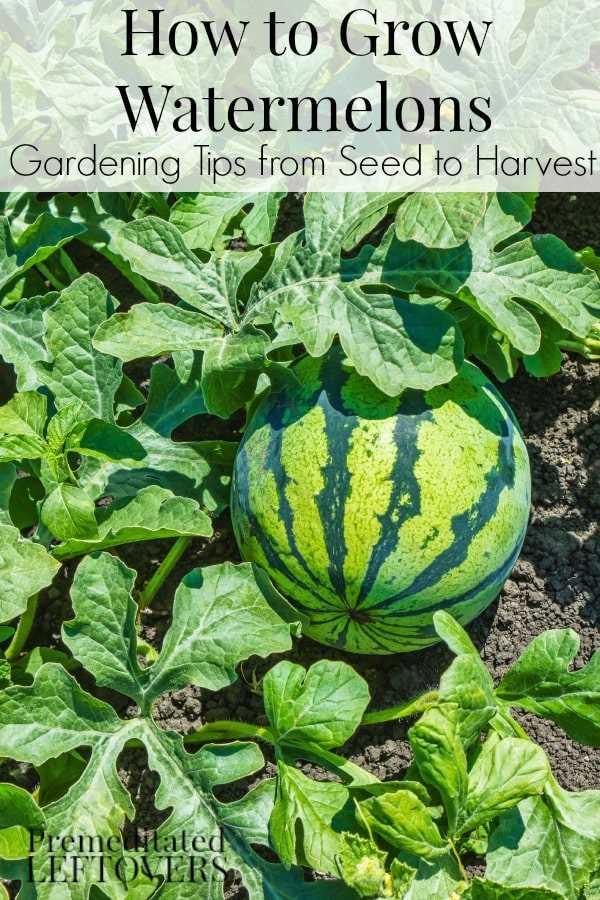
The soil type and quality are crucial for watermelon growth. Watermelons prefer well-draining soil that is rich in organic matter. Sandy loam and loamy soils are ideal for watermelon cultivation. Before planting, prepare the soil by removing any weeds or debris and adding compost or well-rotted manure to improve fertility and drainage.
Watering
Watermelons are water-intensive plants and require consistent moisture throughout the growing season. Adequate watering is critical during the flowering and fruiting stages. Regularly monitor the soil moisture and water deeply when the top inch of soil feels dry. However, be careful not to overwater as this can lead to root rot and other diseases.
Frost Dates
Watermelons are highly sensitive to frost and should only be planted after the danger of frost has passed. The average last frost date in your area should be considered when planning your watermelon planting. Planting too early can result in damage or death of the young watermelon plants.
Space
Watermelons are sprawling plants that require ample space to grow. Plan to provide at least 6 to 8 feet of space between each plant to allow for optimal growth and development. This allows the vines to spread out and prevents overcrowding, which can lead to disease and reduced fruit quality.
By considering the climate and growing conditions in your area, you can select the best watermelon varieties and create an ideal environment for their successful growth. Taking these factors into account will help you maximize your chances of growing healthy watermelon plants and enjoying delicious fruits at harvest time.
Find a Reliable Seed Supplier
When it comes to growing watermelon from seeds, finding a reliable seed supplier is crucial. High-quality seeds from a reputable supplier can significantly increase your chances of success and ensure that you get the best varieties for your vegetable garden. Here are some tips to help you find a reliable seed supplier:
- Research online: Start by researching different seed suppliers online. Look for customer reviews and ratings to get an idea of their reputation. Make sure to check if they specialize in watermelon seeds and if they have a wide variety available.
- Ask experienced gardeners: Reach out to experienced gardeners or horticultural societies in your area and ask for their recommendations. They can provide valuable insights and recommendations based on their own experiences.
- Visit local garden centers: Visit local garden centers or nurseries in your area. They often have a selection of seeds available, and you can ask the staff for recommendations based on your specific needs.
- Check for certifications: Look for seed suppliers that have certifications from organizations like the National Garden Bureau or the American Seed Trade Association. These certifications indicate that the supplier follows certain quality standards.
- Consider organic seeds: If you prefer organic gardening, look for seed suppliers that offer organic watermelon seeds. This ensures that the seeds were produced without the use of synthetic fertilizers or pesticides.
Remember to compare prices, shipping options, and return policies when choosing a seed supplier. It’s also a good idea to start with a small order to test the quality of the seeds before making a larger purchase. By finding a reliable seed supplier, you can set yourself up for a successful watermelon-growing season in your vegetable garden.
Prepare Your Vegetable Garden for Watermelon
Before you start planting watermelon seeds in your vegetable garden, it’s important to prepare the soil and ensure the right conditions for the plants to thrive. Here are some steps to help you get your vegetable garden ready:
1. Choose a sunny location
Watermelons are sun-loving plants and require at least 6-8 hours of direct sunlight daily. Select a spot in your garden that receives plenty of sunlight throughout the day.
2. Clear the area
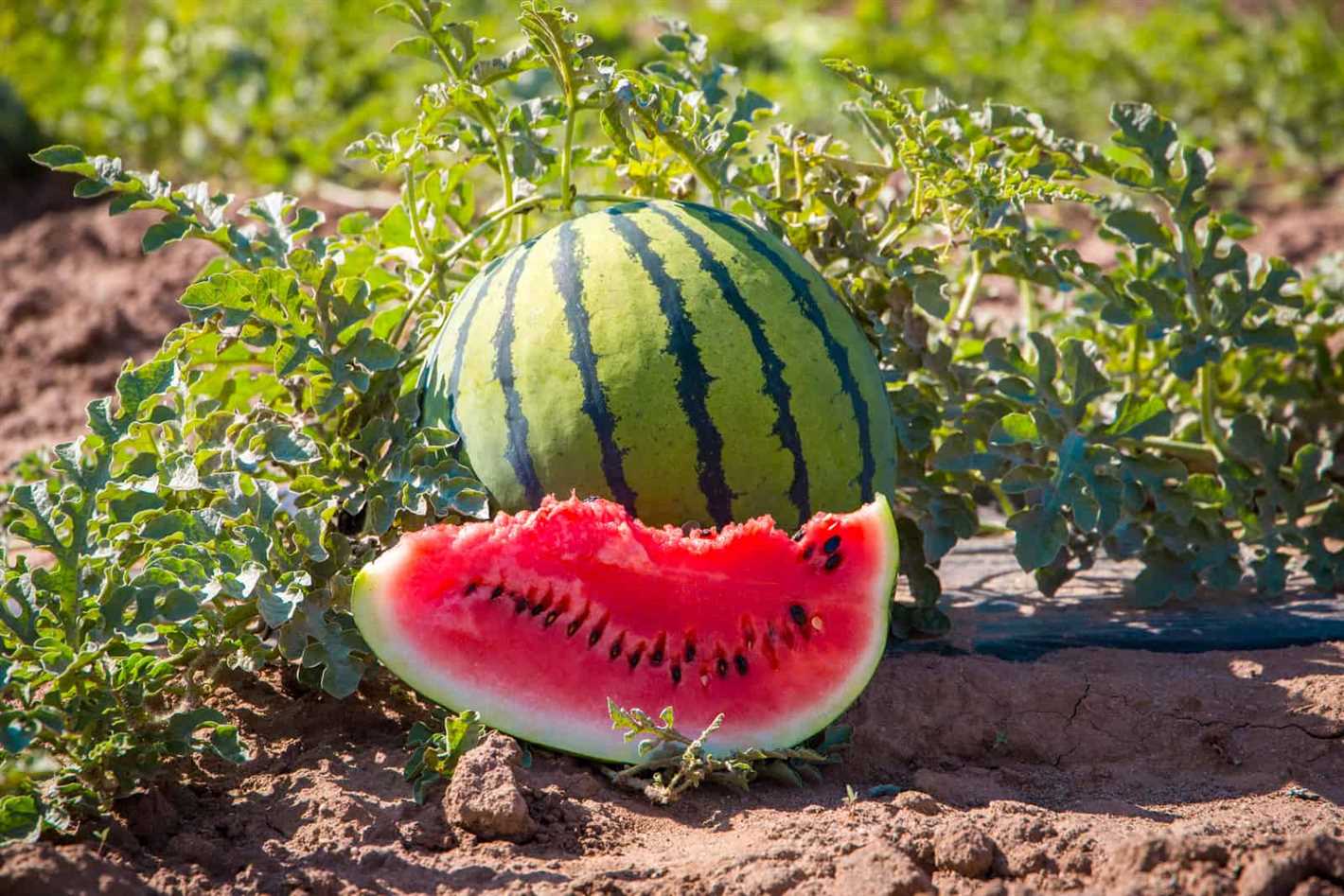
Remove any weeds, rocks, or debris from the designated area. Watermelons need space to spread their vines, so ensure there are no obstructions.
3. Test the soil
Watermelons prefer well-draining soil with a pH level between 6 and 7. Conduct a soil test to determine the pH level and fertility of your garden soil. If the pH level is too low or high, make the necessary amendments with organic matter or garden lime.
4. Improve the soil
Watermelons thrive in soil rich in organic matter. Add compost, well-rotted manure, or other organic materials to improve the soil structure, fertility, and water-holding capacity.
5. Build raised beds
If your garden has heavy clay or sandy soil, consider building raised beds for better drainage and soil quality. These beds also help in warming the soil faster, promoting better watermelon growth.
6. Plan for spacing
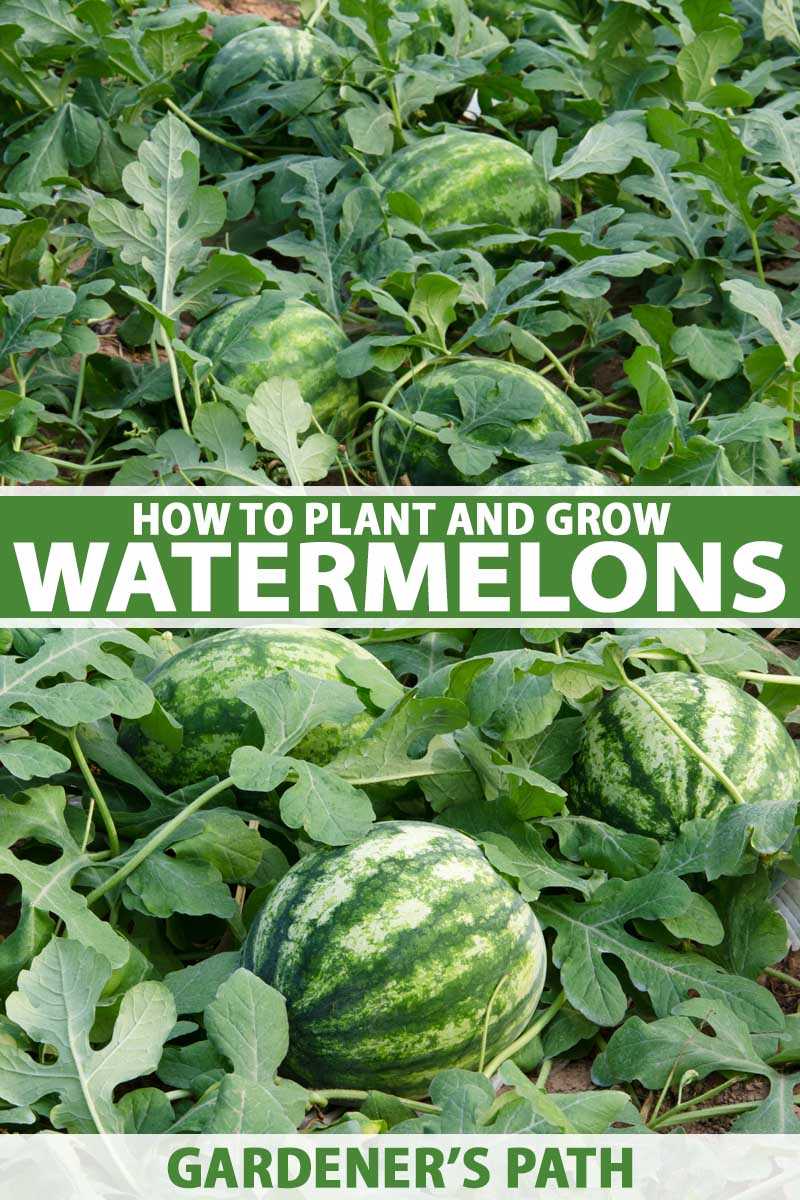
Watermelon plants need ample space to grow and spread their vines. Plan for spacing between the plants and rows according to the variety you choose. Generally, plants should be spaced about 2-3 feet apart in rows that are 5-6 feet apart.
7. Provide support
Some watermelon varieties may require support to keep the fruits off the ground and prevent rotting. Prepare trellises or structures to support the vines and fruits, if needed.
8. Irrigation
Watermelons need consistent moisture, especially during the fruit development stage. Ensure your garden has proper irrigation or watering systems in place to provide regular moisture without waterlogging the roots.
9. Mulch
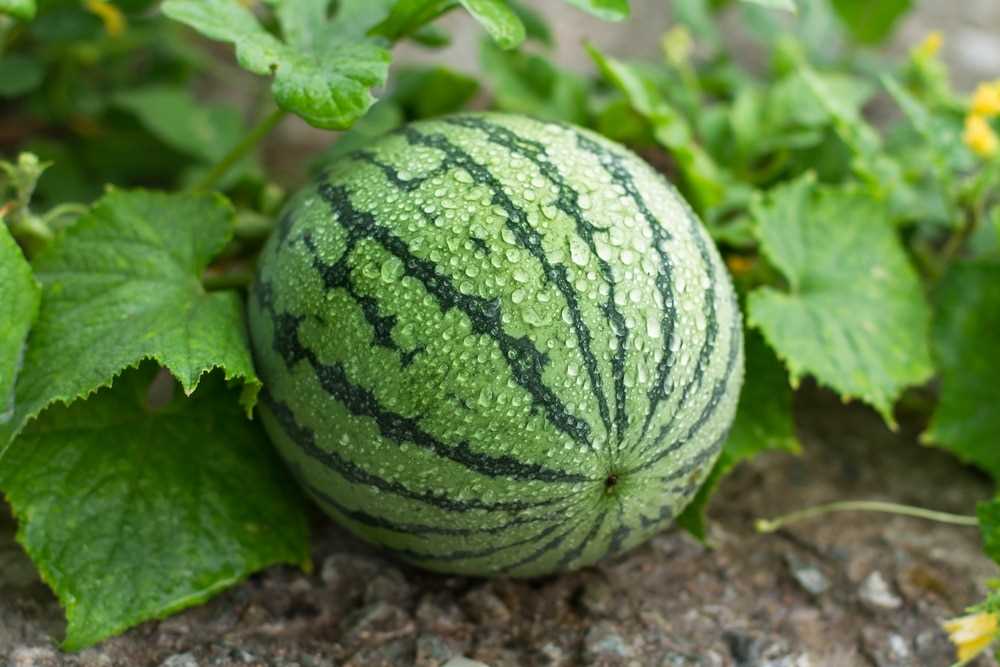
Applying a layer of organic mulch around the watermelon plants helps with weed suppression, soil moisture retention, and temperature regulation. Straw, grass clippings, or wood chips can be used as mulch materials.
10. Prepare for pests and diseases
Watermelons are susceptible to various pests and diseases. Take preventive measures such as inspecting plants regularly, using organic pest control methods, and practicing crop rotation to minimize the risk.
By following these steps and adequately preparing your vegetable garden, you can create a favorable environment for growing watermelons. With proper care and attention, you’ll soon be enjoying delicious homegrown watermelons straight from your garden!
Clear the Area and Remove Weeds
Before you start planting watermelon seeds in your vegetable garden, it’s important to prepare the area by clearing it and removing any weeds. This will help create a clean and fertile environment for your watermelon plants to grow and thrive.
Follow these steps to clear the area and remove weeds:
- Choose the location: Select a sunny spot in your garden that receives at least 6-8 hours of direct sunlight each day. Watermelons need warm temperatures to grow, so choose a spot that is sheltered from strong winds.
- Remove existing plants: If there are any existing plants or vegetation in the chosen area, remove them by pulling them out or digging them up. Make sure to remove the roots to prevent regrowth.
- Clear debris: Rake away any debris such as leaves, sticks, or rocks from the surface of the soil. This will create a clean and level area for planting.
- Remove weeds: Use a garden hoe or hand tools to remove any weeds growing in the area. Make sure to remove the entire weed, including the roots, to prevent regrowth. Be thorough and take your time to ensure all weeds are removed.
- Loosen the soil: Use a garden fork or tiller to loosen the soil in the planting area. This will help improve drainage and loosen any compacted soil, allowing the watermelon roots to penetrate easily.
Note: It’s essential to remove weeds before planting watermelon seeds as weeds can compete for nutrients and water, negatively impacting the growth and yield of your watermelon plants. Regular weeding throughout the growing season is also crucial to maintain a weed-free environment for your watermelons.
Improve the Soil with Organic Matter
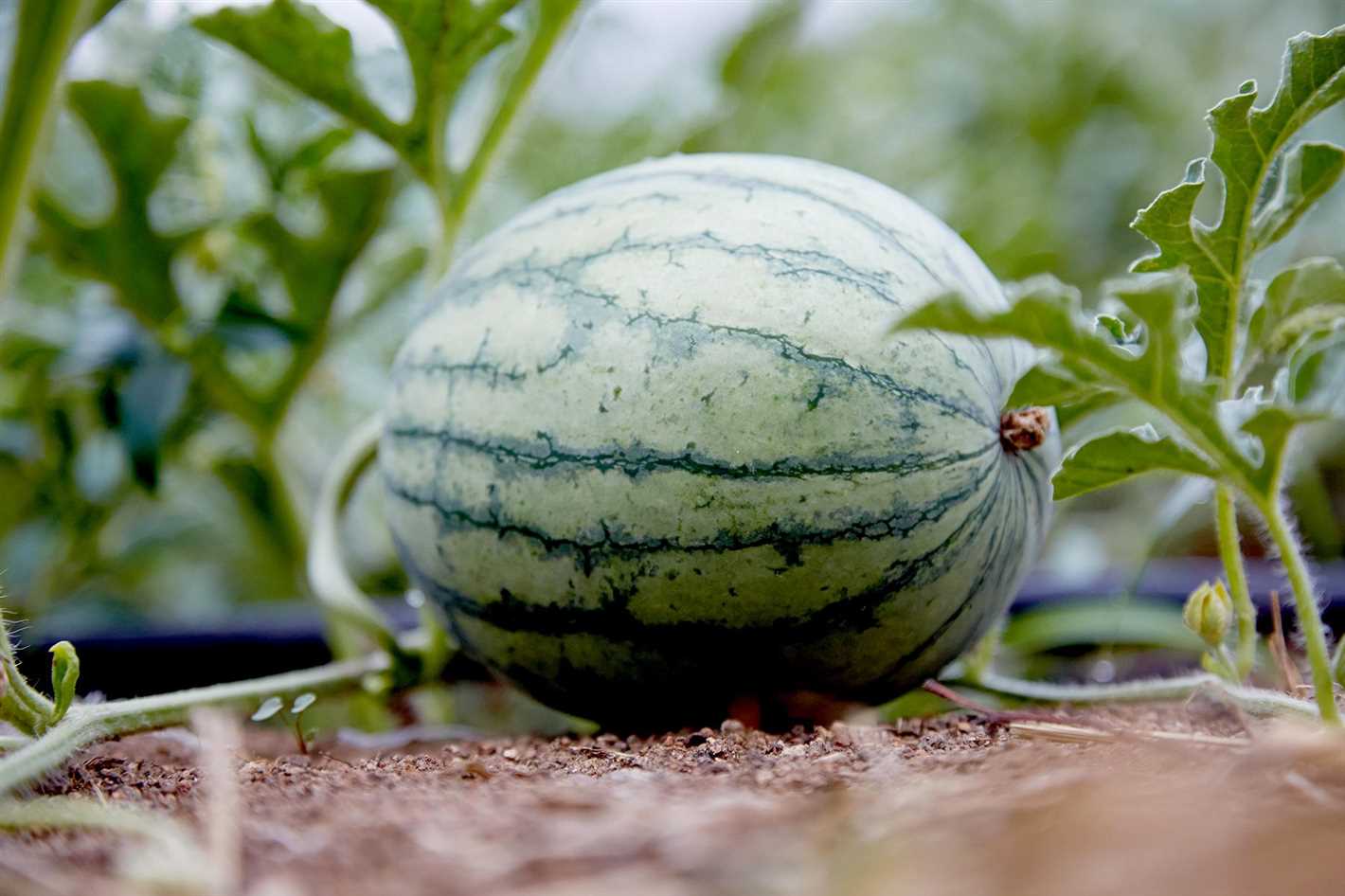
One of the most important factors in successfully growing watermelons is having nutrient-rich soil. By improving your soil with organic matter, you can create the perfect environment for your watermelon plants to thrive.
Benefits of Organic Matter
- Enhances soil fertility: Organic matter contains essential nutrients such as nitrogen, phosphorus, and potassium that are vital for plant growth.
- Improves soil structure: Organic matter helps to create a well-drained soil with good water retention, preventing waterlogging and improving root development.
- Increases microbial activity: Organic matter provides a food source for beneficial soil microbes, which helps to break down nutrients and make them more available to plants.
- Reduces soil erosion: The organic matter acts as a protective layer, preventing soil from being washed away by heavy rainfall or strong winds.
Types of Organic Matter
There are several types of organic matter that you can use to improve your soil. Some popular options include:
- Compost: Compost is a mixture of decomposed organic materials, such as kitchen scraps, yard waste, and manure. It is rich in nutrients and beneficial microorganisms.
- Manure: Animal manure, such as cow or horse manure, is an excellent source of organic matter. It should be well-rotted before applying to the soil.
- Leaf mold: Leaf mold is created by decomposing fallen leaves. It improves soil structure and adds nutrients to the soil.
- Green manure: Green manure refers to planting cover crops, such as clover or buckwheat, and then tilling them into the soil to add organic matter.
Applying Organic Matter
To improve your soil with organic matter, follow these steps:
- Test your soil: Before adding organic matter, it is recommended to test your soil’s pH and nutrient levels to determine the specific needs of your watermelon plants.
- Prepare the soil: Clear the area of any weeds or debris and loosen the soil using a garden fork or tiller.
- Add organic matter: Apply a generous amount of organic matter to the soil surface, then mix it in thoroughly using a garden fork or tiller. Aim for a ratio of about 1 part organic matter to 3 parts soil.
- Water the soil: After incorporating the organic matter, water the soil thoroughly to help the nutrients settle in and promote decomposition.
- Maintain the soil: Throughout the growing season, continue to add organic matter as needed to replenish nutrients and maintain soil fertility.
By improving your soil with organic matter, you can provide your watermelon plants with the nutrients they need to grow strong and produce a bountiful harvest.
Planting Watermelon Seeds
Once you have selected the watermelon variety you want to grow, it’s time to start planting the seeds. Here is a step-by-step guide to help you successfully plant watermelon seeds in your vegetable garden:
- Prepare the soil: Watermelons prefer well-drained soil with a pH of 6.0 to 6.8. Begin by loosening the soil to a depth of at least 8 inches and removing any weeds or debris.
- Choose the right location: Watermelons need plenty of sunlight, so choose a sunny spot in your garden that receives at least 6 hours of direct sunlight each day.
- Sow the seeds: Dig small holes, approximately 1 inch deep, in the prepared soil. Place 2-3 watermelon seeds in each hole and cover them with soil. Space the holes at least 2-3 feet apart to allow the watermelon vines to spread.
- Water the seeds: After planting the seeds, water the soil thoroughly to ensure that it is evenly moist. Avoid overwatering, as this can lead to rotting of the seeds.
- Provide support (optional): If you are growing large watermelon varieties or have limited space, consider providing support for the vines. You can use trellises or cages to support the vines as they grow.
- Maintain proper care: As the watermelon seedlings emerge, continue to water them regularly, keeping the soil consistently moist. Be careful not to let the soil dry out completely, as this can affect fruit development.
- Thin the seedlings: Once the watermelon seedlings have grown a few inches tall, thin them out to leave only the healthiest plant in each hole. This will prevent overcrowding and allow the remaining plants to grow stronger.
- Protect the plants: Keep an eye out for pests, such as aphids or cucumber beetles, and take appropriate measures to protect your watermelon plants. You can use organic pest control methods or consult a local gardening expert for advice.
By following these steps, you can ensure that your watermelon seeds are properly planted and on their way to producing delicious fruits for you to enjoy in your vegetable garden.
Select the Ideal Planting Time
When it comes to planting watermelon seeds, timing is everything. Watermelons are warm-season crops that require a long growing season, so it’s important to choose the ideal planting time to ensure a bountiful harvest.
Factors to Consider
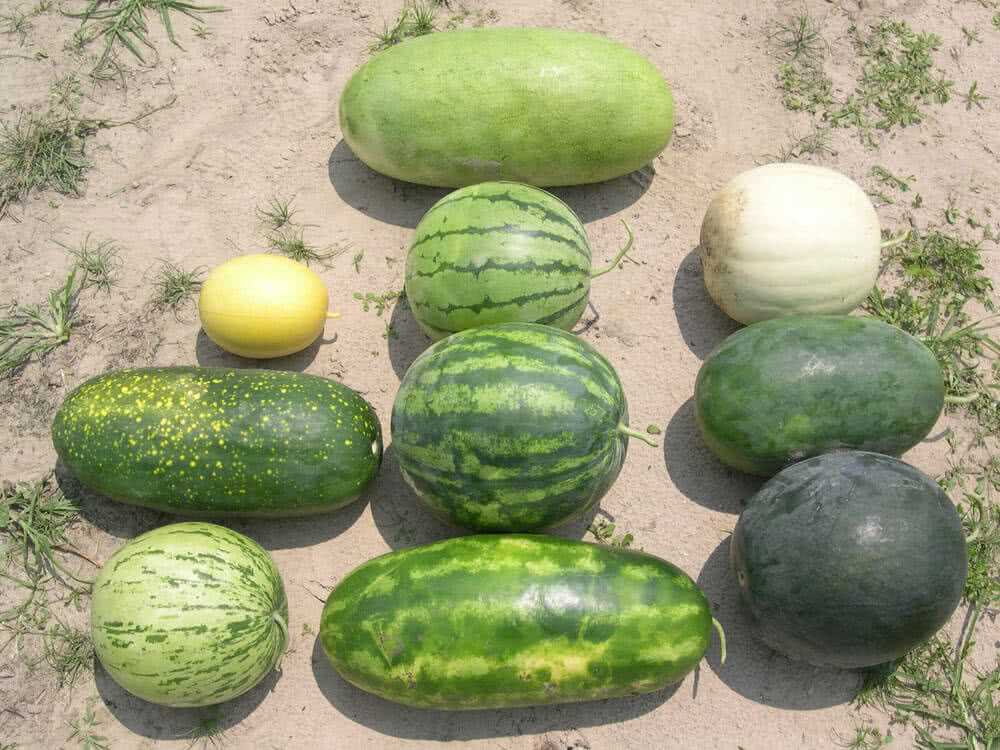
- Climate: Watermelons thrive in warm climates with temperatures consistently above 70°F (21°C). If you live in a region with a short summer, consider planting watermelons in pots or using row covers to extend the growing season.
- Frost Date: Watermelons are susceptible to frost, so it’s crucial to avoid planting them too early in the spring. Check your region’s frost dates to determine the optimal planting date.
- Soil Temperature: Watermelon seeds germinate best when the soil temperature is around 70°F (21°C). Planting too early when the soil is cold can result in poor germination and slow growth.
Recommended Planting Time
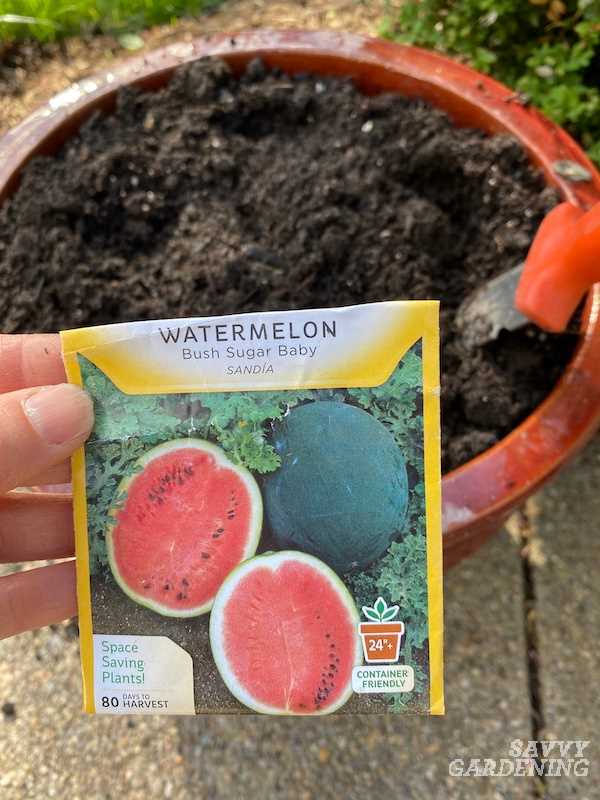
The ideal planting time for watermelons is when the soil has warmed up and all danger of frost has passed. In most regions, this is typically in late spring or early summer. It’s recommended to wait until the soil temperature reaches 70°F (21°C) before planting watermelon seeds.
Additional Tips
- Start seeds indoors: If you have a short growing season, you can start watermelon seeds indoors 2-3 weeks before the last frost date. Transplant the seedlings outdoors once the soil has warmed up.
- Use black plastic mulch: Watermelons love heat, so using black plastic mulch can help warm the soil and promote faster growth.
- Provide proper drainage: Ensure that the planting area has good drainage to prevent waterlogged soil, which can harm watermelon plants.
- Consider variety maturity: Different watermelon varieties have varying maturity dates. If you want an early harvest, choose an early-maturing variety.
By selecting the ideal planting time and following these tips, you’ll be on your way to growing delicious watermelons in your vegetable garden.
Provide Proper Spacing and Depth
When planting watermelon seeds in your vegetable garden, it is essential to provide them with proper spacing and depth. This will ensure that the plants have enough room to grow and develop properly.
Spacing: Watermelon plants require a considerable amount of space to spread out and produce fruit. The recommended spacing for watermelon plants is about 6 to 8 feet apart in rows, with rows spaced around 8 to 10 feet apart. This spacing allows the plants to have adequate airflow and sunlight, which are crucial for their growth.
Depth: Watermelon seeds should be planted at a depth of about 1 inch into the soil. This depth provides the seeds with the necessary moisture and protection while allowing them to germinate and establish healthy roots. It is important not to plant the seeds too deeply, as they may struggle to reach the surface and sprout.
One tip to consider is to create hills or mounds when planting watermelon seeds. This helps with drainage and prevents excess moisture around the plants. Additionally, it can create a slight slope for the watermelon vines to grow, making it easier to manage and harvest the fruits.
It is also crucial to maintain proper spacing and depth when thinning watermelon seedlings. Once the seedlings have sprouted and developed their first true leaves, thin them out to ensure that each plant has enough space to grow. This process involves removing the weaker seedlings, leaving only the healthiest ones.
By providing proper spacing and depth, you can give your watermelon plants the best conditions to grow and produce delicious fruits in your vegetable garden.
Caring for Your Watermelon Plants
- Plant your watermelon plants in a location that receives full sun for at least 6 to 8 hours a day.
- Provide your watermelon plants with well-drained soil that is rich in organic matter.
- Water your watermelon plants regularly, especially during dry periods. Keep the soil evenly moist, but not waterlogged.
- Apply a layer of organic mulch around your watermelon plants to help retain moisture in the soil and prevent weed growth.
- Fertilize your watermelon plants with a balanced fertilizer once a month during the growing season.
- Support the developing watermelons by placing them on a piece of cardboard or cloth to prevent rotting and sunburn.
- Monitor your watermelon plants for pests, such as aphids or cucumber beetles, and take appropriate action to control them.
- Prune your watermelon plants by removing any dead or diseased leaves and vines to improve air circulation and prevent the spread of diseases.
- Harvest your watermelons when the fruits are fully ripe. Look for signs like a dry tendril opposite the fruit, a dull skin color, and a hollow sound when tapped.
“Question-Answer”
What are the best watermelon varieties to grow in my vegetable garden?
There are several watermelon varieties that are well-suited for growing in a vegetable garden. Some popular options include Sugar Baby, Crimson Sweet, and Jubilee.
What is the best time to plant watermelon seeds?
The best time to plant watermelon seeds is in late spring or early summer, when the soil temperature reaches at least 70°F (21°C). This ensures that the seeds will germinate and the plants will grow properly.
How long does it take for watermelon seeds to germinate?
Watermelon seeds typically germinate within 7 to 10 days after planting, depending on the conditions and variety of the seeds.
Do watermelon plants require a lot of space to grow?
Yes, watermelon plants require a lot of space to grow. They have long vines that can spread out to several feet, so it’s important to give them enough room to ensure proper growth and fruit production.
Can I grow watermelon in a container?
While it’s possible to grow watermelon in a container, it can be challenging. Watermelon plants require a lot of space, and their large vines may not fit in a typical container. However, there are some smaller, bush-type watermelon varieties that are better suited for container gardening.
How often should I water my watermelon plants?
Watermelon plants require consistent and deep watering throughout their growing season. It’s important to keep the soil evenly moist, but not waterlogged. Depending on the weather and soil conditions, this may mean watering every 2-3 days or more frequently during hot, dry periods.
When is the best time to harvest watermelons?
The best time to harvest watermelons is when they are fully ripe. This is typically indicated by a dulling of the fruit’s skin color, a change in the color of the tendrils near the stem, and a hollow sound when tapped. It’s important to harvest watermelons at the right time to ensure the best flavor and texture.







